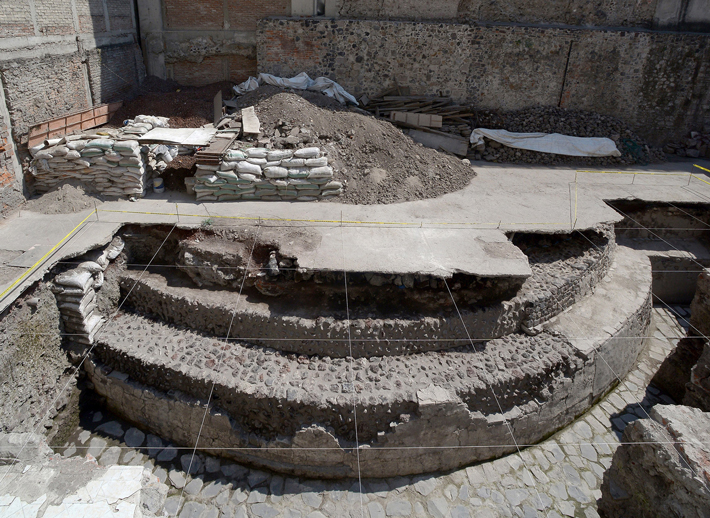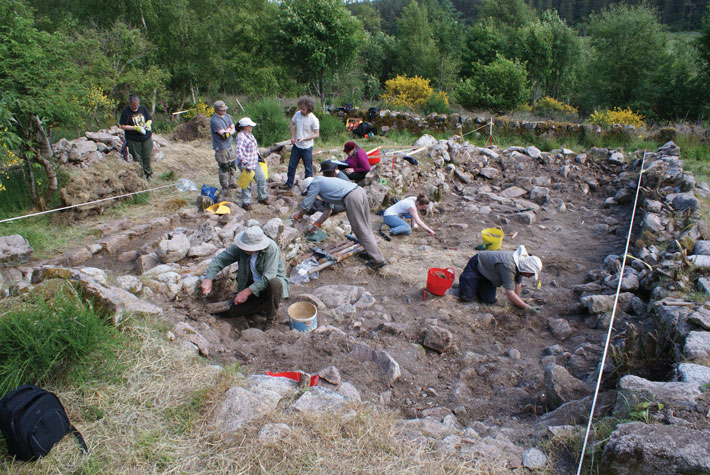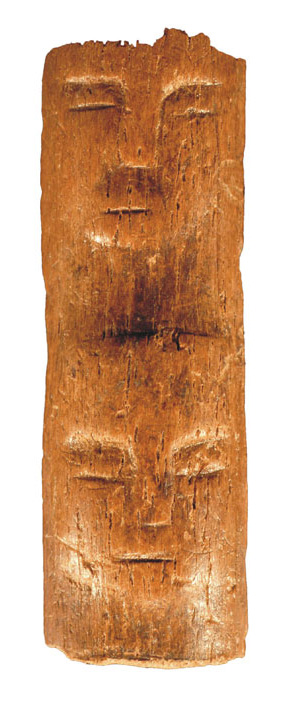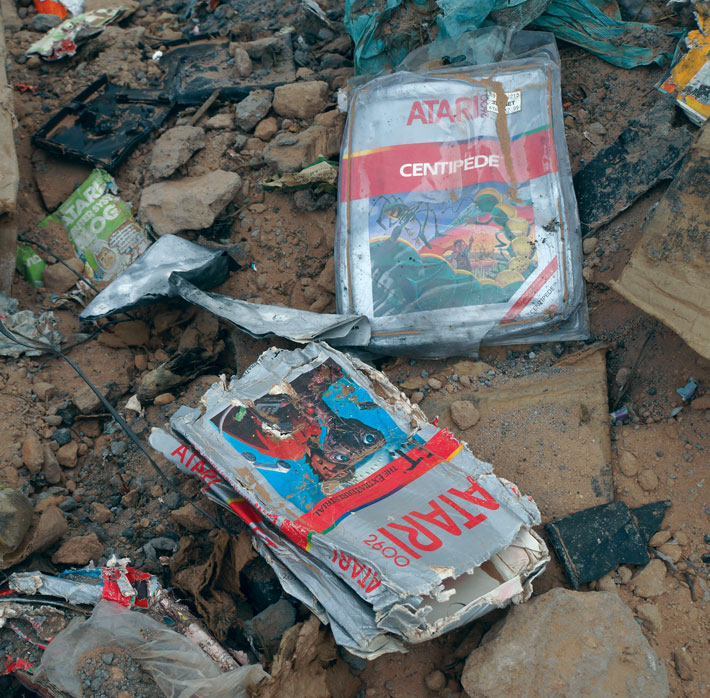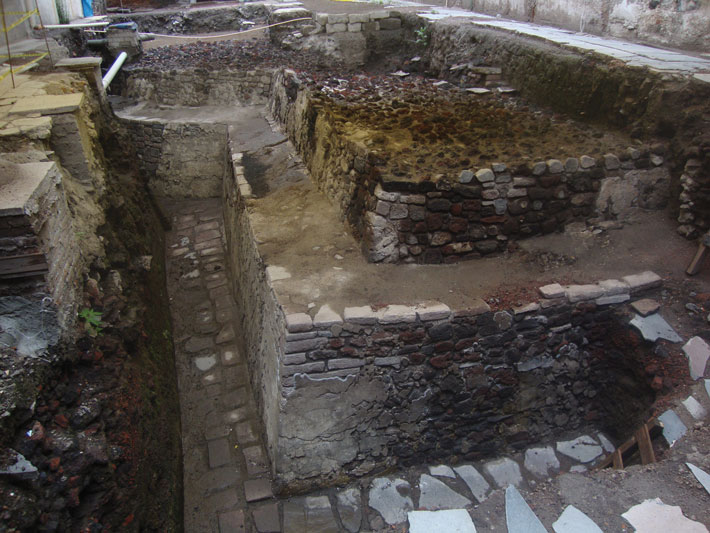
Archaeological sites in Mexico City have street addresses, not GPS coordinates, as sites tend to elsewhere. At this particular address, behind the green door, next to the Calmécac, archaeologists uncovered the Temple of Ehécatl-Quetzalcoatl, a structure dating from about 1450. The temple, whose distinctive, round shape was described by Spanish priest Bernardino de Sahagún, was located about 80 feet north of where Spanish colonial maps had originally shown it to be. Ehécatl was a wind god sometimes depicted as a version of Quetzalcoatl, the feathered serpent who had already been worshipped in central Mexico for more than 1,000 years by the time Tenochtitlan was founded in 1325. In fact, snake imagery abounded at the temple in antiquity. Spanish chroniclers described the building as having a conical roof made of straw, resembling a coiled snake. To enter, worshippers passed through a stone arch carved to resemble a snake’s mouth, complete with fangs. The Spaniards associated serpents with the Garden of Eden story, regarding the reptiles as evil, and usually destroyed snake images wherever they saw them. But, if the temple’s snake arch wasn’t destroyed by the Spaniards, it may still lie buried beneath a row of buildings behind the Metropolitan Cathedral, awaiting discovery.

Excavation has shown that the Guatemala Street temple was bordered by a long outer wall, which the modern street directly above it follows exactly. This is no coincidence, but rather evidence that the Spaniards stuck closely to the original Aztec urban grid when they built their own city on the ruins of Tenochtitlan. Modern avenues also run along the same lines as causeways that once connected the ancient island city to the mainland.


